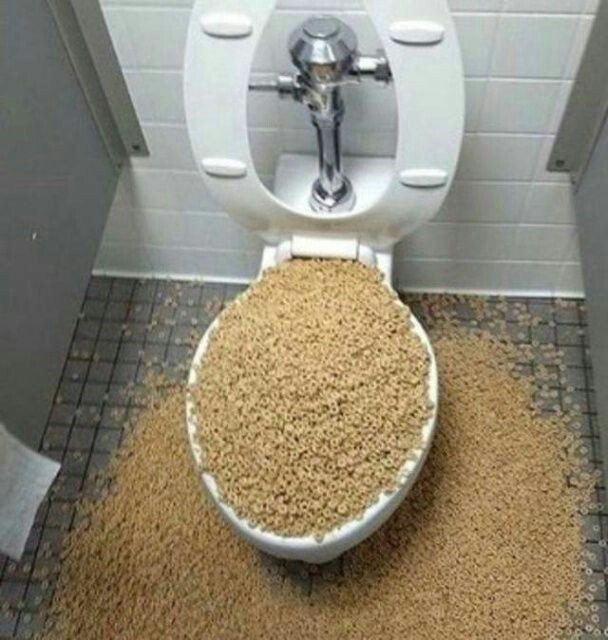Can You to Dispose of Food in the Toilet?
Can You to Dispose of Food in the Toilet?
Blog Article
We've noticed the article on What Can Happen If You Flush Food Down the Toilet? down the page on the internet and felt it made good sense to quickly share it with you on this site.

Intro
Lots of people are frequently faced with the dilemma of what to do with food waste, particularly when it comes to leftovers or scraps. One typical inquiry that emerges is whether it's okay to flush food down the commode. In this post, we'll explore the reasons why individuals may consider flushing food, the repercussions of doing so, and alternative approaches for proper disposal.
Reasons why people might think about purging food
Lack of recognition
Some people may not recognize the possible damage caused by flushing food down the commode. They may erroneously think that it's a harmless method.
Comfort
Flushing food down the toilet might appear like a quick and very easy solution to throwing away unwanted scraps, specifically when there's no close-by garbage can available.
Idleness
In many cases, people may merely pick to flush food out of sheer negligence, without thinking about the effects of their actions.
Consequences of flushing food down the commode
Environmental effect
Food waste that ends up in rivers can add to air pollution and injury marine ecosystems. In addition, the water made use of to flush food can strain water resources.
Pipes concerns
Purging food can result in blocked pipelines and drains pipes, creating costly pipes repair services and hassles.
Kinds of food that must not be flushed
Coarse foods
Foods with coarse textures such as celery or corn husks can obtain entangled in pipelines and create blockages.
Starchy foods
Starchy foods like pasta and rice can take in water and swell, leading to obstructions in pipelines.
Oils and fats
Greasy foods like bacon or food preparation oils should never be purged down the commode as they can strengthen and create blockages.
Correct disposal techniques for food waste
Utilizing a garbage disposal
For homes furnished with garbage disposals, food scraps can be ground up and flushed via the plumbing system. Nevertheless, not all foods are suitable for disposal in this manner.
Recycling
Certain food packaging products can be recycled, decreasing waste and minimizing environmental impact.
Composting
Composting is a green means to dispose of food waste. Organic materials can be composted and made use of to improve soil for horticulture.
The importance of appropriate waste administration
Minimizing ecological harm
Proper waste administration practices, such as composting and recycling, aid minimize air pollution and maintain natural deposits for future generations.
Protecting pipes systems
By avoiding the technique of flushing food down the bathroom, house owners can prevent costly pipes repair work and maintain the stability of their pipes systems.
Verdict
To conclude, while it might be tempting to purge food down the toilet for ease, it is necessary to comprehend the potential consequences of this action. By taking on proper waste management methods and throwing away food waste properly, individuals can contribute to much healthier plumbing systems and a cleaner atmosphere for all.
FLUSH FOOD DOWN THE TOILET?
FLUSHING FOOD CAN CAUSE BLOCKED DRAINS IN YOUR HOME
All of the plumbing fixtures in your home are connected to the same sewer pipe outside of your home. This outdoor sewer pipe is responsible for transporting all the wastewater from your home to the Council sewer mains. Even small pieces of food that go down the kitchen sink can cause problems for your sewer. It should therefore be obvious that flushing larger bits of food, such as meat, risks a clog in either the toilet itself or the sewer pipes. Flushing greasy food is even more problematic because oil coagulates when it cools, coating the interior lining of your pipes.
THE TOILET IS NOT A BIN
Food isn’t the only thing that people shouldn’t be flushing down the toilet. People use the toilet to dispose of all kinds of things such as tampons, makeup wipes, dental floss, kitty litter and even underwear. Water goes to great lengths to educate residents about the high costs and stress placed on wastewater treatment systems simply from people flushing the wrong stuff down the toilet. It costs taxpayers millions of dollars each year, and homeowners thousands in blocked drain repairs.
FLUSHING FOOD IS A WASTE OF WATER
Flushing food is a waste of our most precious resource - water. In June this year Level 1 water restrictions were introduced to protect water supply from drought conditions. Much of New South Wales continues to be affected by prolonged drought with recent figures revealing up to 97 per cent of the state remains in drought. Depending on whether you have a single or dual flush toilet, every single flush uses between five and 11 litres of water. In the current climate this is a huge amount of water to be wasting on flushing food that should be placed in the bin (or better yet, the compost).
https://www.jabplumbingsolutions.com.au/blog/can-you-flush-food-down-the-toilet

I am very taken with Flushing Food Down the Toilet? and I really hope you enjoyed reading my article. If you enjoyed reading our blog entry please make sure you remember to pass it around. Thank you for your time invested reading it.
Get Started Report this page